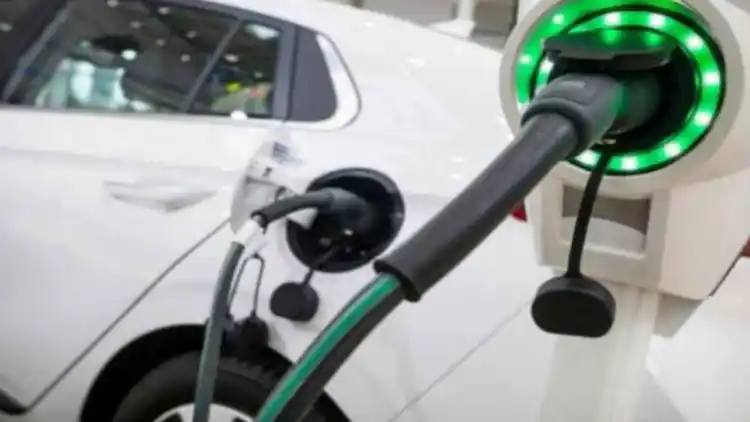- A Quick Overview of the UAE’s Charging Network (2025)
- Common Types of EV Chargers and Plugs in the UAE
- 1. AC (Alternating Current) Charging
- 2. DC (Direct Current) Fast Charging
- 3. Ultra-Fast Charging Hubs
- Compatibility Question: One Charger, Many Cars?
- Regulation Framework: One Nation, Unified Standard
- “The Traveler and the Two Chargers”
- Home Charging in the UAE
- Key Differences: AC vs DC Charging
- Common Misconceptions
- Benefits of Unified Charging Standards
Electric vehicles (EVs) are steadily taking over roads across the United Arab Emirates, supported by an expanding charging network and bold government incentives. Yet, one question continues to puzzle both new and prospective owners: Can any charger work with any electric vehicle in the UAE?
At first glance, it seems simple — plug in, charge, and go. But in reality, the answer depends on the type of plug, charging level, and standard compatibility between the car and the station. As the UAE accelerates its push toward carbon neutrality by 2050, understanding these nuances ensures maximum convenience and efficiency while protecting your EV’s battery health.

A Quick Overview of the UAE’s Charging Network (2025)
Over 1,000 public charging stations now operate across all emirates, managed by DEWA, Abu Dhabi Energy Department, and private CPOs.
Both AC (slow/medium) and DC (fast/ultra-fast) chargers are widely available in malls, highways, hotels, and airports.
From January 2025, standardized tariffs apply:
AC Chargers: AED 0.70 per kWh (+ VAT)
DC Chargers: AED 1.25 per kWh (+ VAT)
These rates end the era of free charging incentives introduced during 2017–2024.
The UAE’s National Electric Vehicles Policy now enforces a unified framework that guarantees charger interoperability and driver safety between brands such as Tesla, BYD, Hyundai, NIO, and Mercedes EQ.
Common Types of EV Chargers and Plugs in the UAE

1. AC (Alternating Current) Charging
This is the most common type of public and residential EV charging found in the UAE.
Levels:
Level 1: Slow — a standard household socket (around 3 kW).
Level 2: Medium — wall chargers (7–22 kW) used at homes, offices, or malls.
Plug Type:
Type 2 (Mennekes): The official UAE standard for AC charging adopted by DEWA and MOEI.
Charging Time: Adds 20–40 km of range per hour depending on your vehicle’s onboard charger.
2. DC (Direct Current) Fast Charging
These high-voltage chargers directly feed energy into the battery, skipping conversion losses.
Types:
CCS 2 (Combined Charging System): Mandatory standard across the UAE; compatible with most global models (BMW, Tesla EU spec, Audi, Lucid, Kia EV6, etc.).
CHAdeMO: Slowly being phased out but still found in older Japanese EVs like Nissan Leaf.
Charging Time: Adds 300 km of range in under 25 minutes (150 kW+).
3. Ultra-Fast Charging Hubs
New-generation 350 kW stations being installed on highways between Dubai–Abu Dhabi–Sharjah.
Offer both plugs (CCS2 & Type2) and smart billing via RFID or mobile wallet.
Compatibility Question: One Charger, Many Cars?
Technically, any EV in the UAE can plug into public chargers — provided the connector matches the car’s port.
Tesla vehicles imported from Europe work natively with UAE CCS2 chargers, but US imports require an adapter.
So: not every charger fits every car, but the UAE’s strict adherence to Type 2 and CCS2 makes 90% of cars plug‑and‑charge across brands.
Regulation Framework: One Nation, Unified Standard
By mid‑2025, new EV infrastructure will follow UAE S 2698:2024 Technical Regulation –
which enforces:
CCS2 as the national DC plug standard.
Mandatory DEWA licensing for private Charge Point Operators (CPOs).
Safety and power‑rating compliance (IP 67 waterproofing & fire‑resistant cabling).
Smart charger integration for tariff control and grid balancing.
Additionally, DEWA’s EV Green Charger Network gives each driver an EV account ID linking all public chargers nationwide for seamless billing.
“The Traveler and the Two Chargers”
One evening, an Emirati driver named Khalid set off from Abu Dhabi to Ras Al Khaimah in his new BYD Seal. Halfway through, he stopped at a small DC charging station. To his surprise, the plug didn’t fit — it was an older CHAdeMO socket made for early Japanese EVs. Nearby, a tourist with a Kia EV6 smiled and connected easily using CCS2.
The station operator explained: “The standard changed. Old plugs fade, new ones unite.”
Khalid later found a CCS2 charger at a DEWA hub, recharged in 25 minutes, and continued seamlessly.
Moral: technology evolves, but standards bridge the gap — when everyone speaks the same “charging language,” journeys remain uninterrupted.
Home Charging in the UAE
EV owners can easily install Level 2 chargers at home after approval from their local utility provider.
Requirements:
Application to DEWA or AD Power (for Emirates Water & Electricity Company residents).
Certified Type 2 wallbox with ground insulation and smart metering.
Professional installation cost: AED 3,000–6,000 on average.
Safety Tips:
Avoid plug‑sharing with high‑load appliances.
Schedule charging after 10 p.m. (during off‑peak tariffs).
Prefer units with Wi‑Fi energy tracking.
Key Differences: AC vs DC Charging
Common Misconceptions
“Any plug fits any car.” → False: only CCS2 & Type 2 dominate UAE compatibility.
“Fast charging daily is fine.” → Not recommended; can reduce battery lifespan.
“CHAdeMO will stay forever.” → Being phased out globally after 2026.
“Home extension cables work.” → Dangerous and voids manufacturer warranty.
Benefits of Unified Charging Standards
Flexibility: seamless travel inter‑emirate without worrying about plug types.
Scalability: fewer technical barriers for private CPOs and developers.
Sustainability: supports national goal of 50% EV usage by 2050.
Economic Efficiency: shared maintenance lowers cost across operators.
The UAE’s electrification strategy has made EV ownership simpler than ever. Thanks to unified plug standards (Type 2 & CCS2) and clear DEWA regulations, most electric vehicles can charge at any public station nationwide.
While legacy chargers may lag behind, the system is evolving fast — by 2027, universal interoperability will be reality. Whether you own a Tesla, Hyundai, or Lucid, driving electric in the Emirates now means one thing: plug in with confidence and enjoy the charge of the future.












